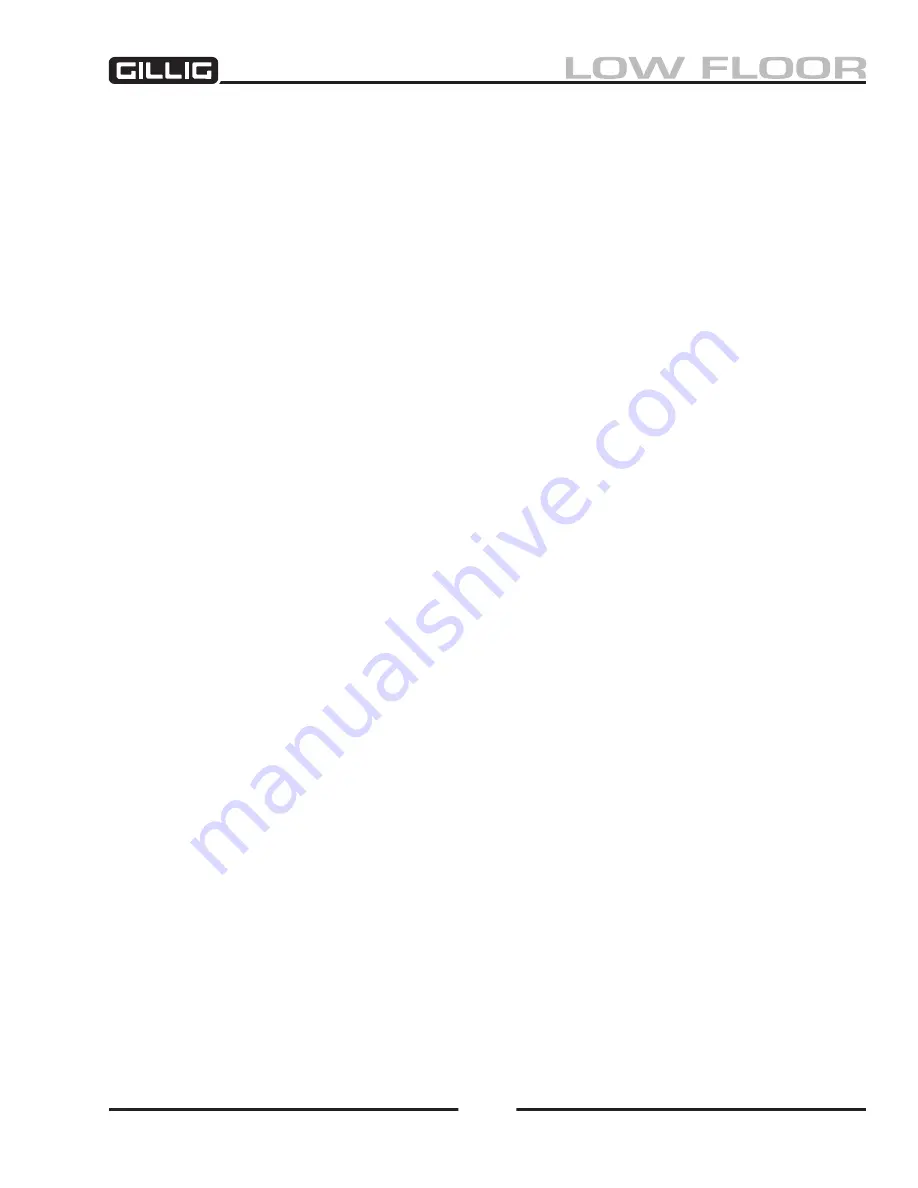
Brakes & Wheels
30
Correcting Irregular Tire Wear
At the first sign of uneven tire wear, check and correct all mechanical defects.
•
Heel and Toe Wear:
This is a saw-toothed effect where one end of each tread block is worn more
than the other end. The end that wears is the one which first grips the road when the brakes are ap
-
plied.
This wear pattern is less noticeable on rear tires than on front tires, because the propelling action
of the rear wheels creates a force which tends to wear the other end of the tread blocks. The two
forces, propelling and braking, cause more even wear on the rear tires. Since only the braking
forces act on the front tires the saw tooth effect is more noticeable.
A certain amount of heel and toe wear is normal. Excessive wear is usually due to high speed driv
-
ing and excessive use of brakes. The best remedy, besides altering one’s driving habits, is to rotate
tires regularly.
•
Side Wear:
This may be caused by incorrect wheel camber, under inflation, high-cambered roads,
or excessive cornering speeds. The first two causes are most common. Camber wear can be easily
identified because it occurs on only one side of the treads, whereas under-inflation causes wear on
both sides. Camber wear requires correction on the camber first and then the interchange (rota
-
tion) of tires. Under-inflation wear requires inflation according to the load and the manufacturer’s
recommendations. There is, of course, no correction for high-cambered roads. Cornering wear is
discussed later.
•
Misalignment Wear:
This is wear due to excessive toe-in or toe-out. In either case, tires will re-
volve with a side motion and scrape tread off. If the misalignment is severe, rubber will be scraped
off both tires. If it is slight, only one tire will be affected. The scraping action against the face of
the tires causes a small feather edge of rubber to appear on one side of the tread. Feather edge is
a certain sign of misalignment. The remedy is readjusting the toe-in or rechecking the entire front
end alignment, if necessary.
•
Cornering Wear:
Cornering too fast causes the load to shift and creates uneven loading on the
tires. The rear tire on the inside may be relieved of load to the extent it slips and grinds tread off
on the inside half of the tire. The outside tire may be so overloaded that it is distorted and wears
excessively on the outside half of the tire.
Cornering wear is most easily identified by rounding of the outside edge of the tire and the rough
-
ening of the tread surface, which indicates abrasion.
The only remedy to cornering wear is the proper instruction of operators. To offset normal corner-
ing wear as much as possible, interchange tires at regular intervals.
•
Uneven Wear:
Uneven or spotty wear is due to irregularities such as bent front suspension parts,
out-of-balance wheels, brake drums out-of-round, brakes out of adjustment, or other mechanical
conditions. The remedy in each case is locating and correcting the defect.
•
Power and Speed Wear:
Excessive speed is harmful to tires because speed creates heat and heat
softens tires.
•
Stops and Starts:
Quick stops and starts grind off tread quickly by causing flat spots which will
continue to enlarge for the life of the tire.
•
Temperature:
Considerably less mileage can be expected from a tire used in all-warm weather
driving as compared to all-cool weather driving.
Summary of Contents for LOW FLOOR
Page 18: ...Specifications 18...
Page 58: ...Preventive Maintenance 58...
Page 110: ...Engine 110...
Page 138: ...Transmission Driveline Rear Axle 138...
Page 182: ...Suspension 182...
Page 260: ...Air System 260...
Page 420: ...Electrical System 420 Deutsch DT Series Connectors...
Page 421: ...Electrical System 421...
Page 422: ...Electrical System 422 Deutsch HD 10 Series Connectors...
Page 423: ...Electrical System 423...
Page 424: ...Electrical System 424 Deutsch HD 30 Series Connectors...
Page 425: ...Electrical System 425...
Page 442: ...Heating Air Conditioning 442...
Page 492: ...Body and Interior 492 Figure 11 33 USSC Seat Assembly...
Page 493: ...Body and Interior 493 Figure 11 34 USSC Seat Suspension Assembly...
Page 495: ...Body and Interior 495 Figure 11 37 Seat Air Connections...






























